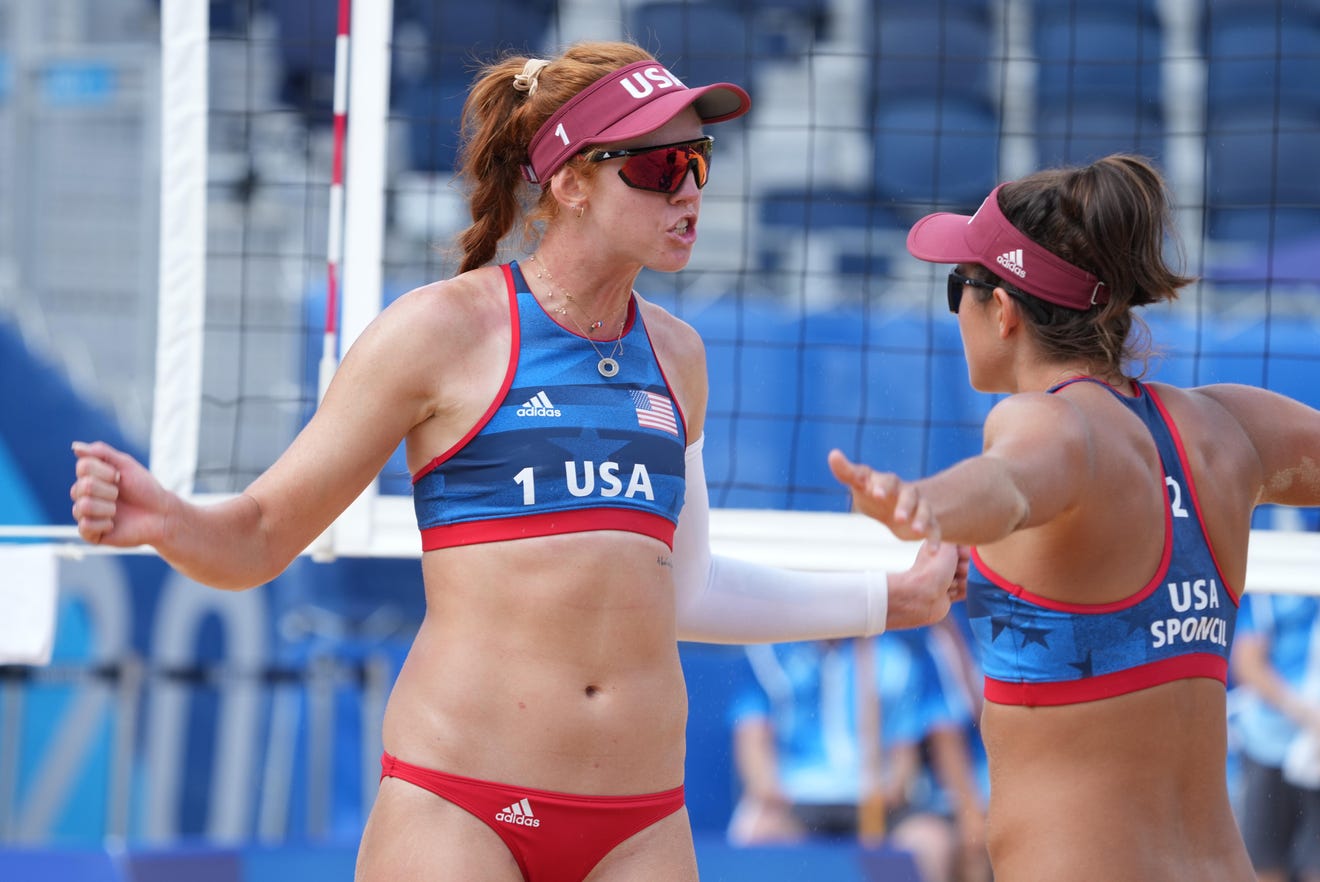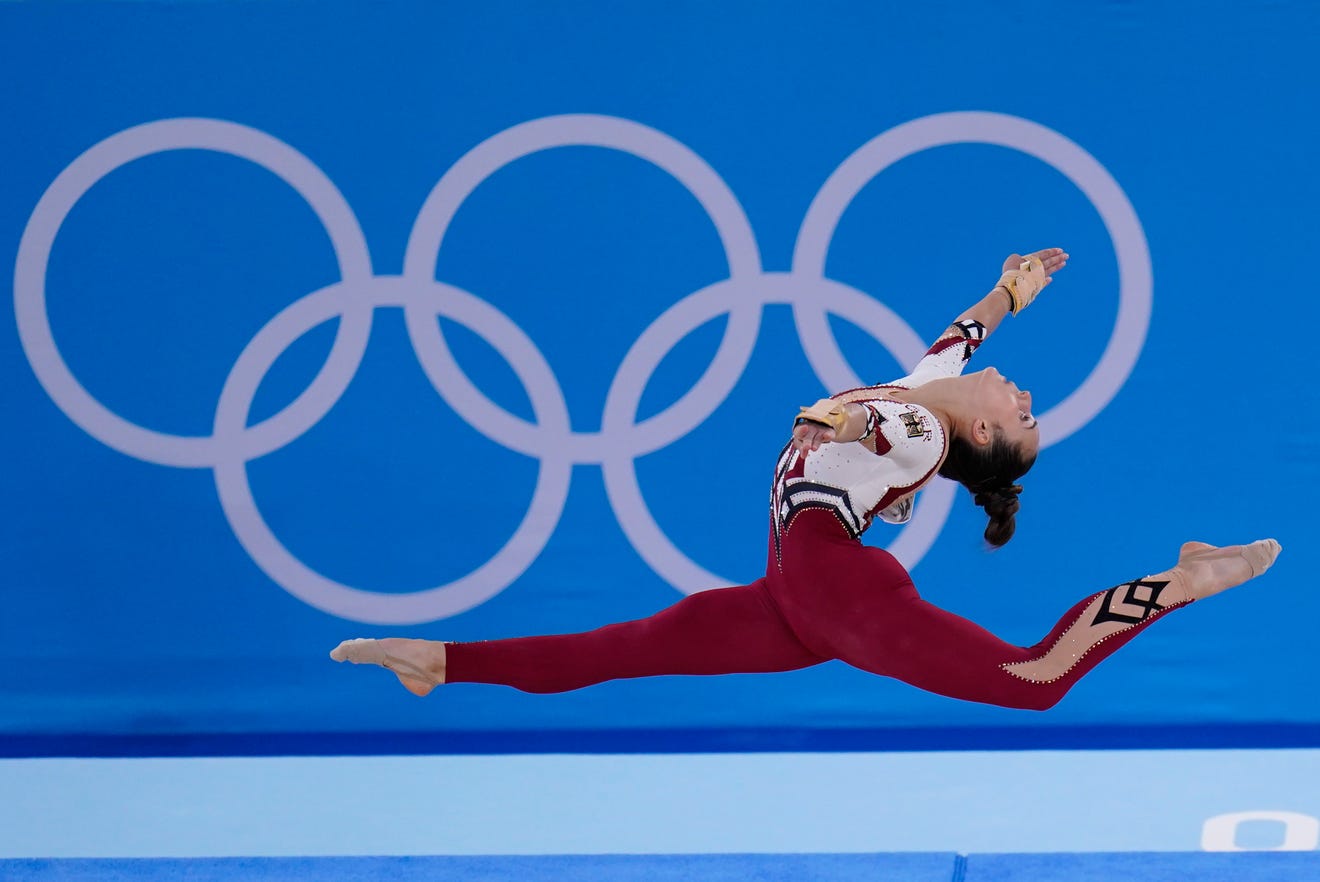Photo Credit:
German artistic gymnast Pauline Schaefer-Betz performs her floor routine in the Tokyo Olympics on July 25th, 2021. Gregory Bull/AP
The Olympics are supposed to be about sports. So why are we talking about what female athletes are wearing?
The latest uproar over who wore what is about German gymnasts at the Tokyo Olympics ditching their bikini-cut leotards in favor of more coverage. It comes just days after Norway’s women’s beach handball team was fined for choosing to wear shorts over bikini bottoms at championships in Bulgaria.
The German team in Tokyo, which includes Olympic veterans Elisabeth Seitz, Kim Bui and Pauline Schaefer-Betz and first-timer Sarah Voss, opted to wear long-legged and long-sleeved unitards during the July 25 preliminary rounds that determined which teams would advance to the Olympics finals.
A choice to cover up, including hijabs
“We wanted to show that every woman, everybody, should decide what to wear,” Seitz told reporters. “That doesn’t mean we don’t want to wear the normal leotard any more. It is a decision day by day, based on how we feel and what we want. On competition day, we will decide what to wear.”
Seitz continued to make her case on her Instagram account, writing that the team wanted to set an example by wearing “a new type of suit” to give voice to athletes who “may feel uncomfortable or even sexualized in normal suits.”
It’s important to point out that there are female players who are fine with their Olympic uniforms – as revealing as they may be. Take, for example, female beach volleyball players. Since the 2012 London Olympics, they’ve had the option of wearing shorts and sleeved tops, but most still choose to serve the ball in bikini bottoms.

U.S. beach volleyball players Kelly Claes (1) and Sarah Sponcil (2) on July 26th, 2021 during the Tokyo Olympics. Jack Gruber/ USA TODAY Sports
As a feminist, it has been empowering and energizing to see people around the world rally around women Olympic athletes who are boldly taking a stand against blatant sexism and misogyny in sports.
But as an American Muslim woman of color, I can’t help but ask: Why do we so fiercely support the right of white women to cover but not of Black or brown women to do the same?
“Hijab bans have affected generations of Muslim women athletes,” writes Shireen Ahmed, an award-winning sports journalist who focuses on the intersections of racism and misogyny in sports. “Historically, hijab bans were implemented to ensure ‘safety’ for players and opponents. We know that this isn’t true.”
Level of rage varies by skin color
Ahmed says that for Muslim and racialized women, exclusion and forced uncovering have been a reality for a very long time. She points out how when France hosted the women’s world cup in 2019, French Muslim women who wore the hijab were banned from playing, coaching, officiating or being part of a team in any way.
“I am not upset that people started to care about Norwegian women athletes’ lack of choice,” Ahmed stipulates. “It is indeed egregious, and part of a wider system of sexism in sport. But the lack of outrage for Black and Brown women in sport does not escape me.”
The lack of outrage for women of color doesn’t escape me, either, but it does continue to infuriate me. While the policing of white women’s bodies at the Olympic Games is no different from the policing of Muslim women’s bodies, what clearly varies is the level of rage we feel depending on the color of female athletes’ skin.














